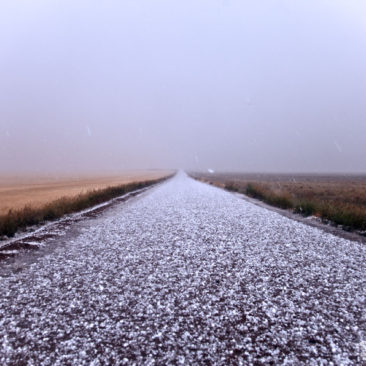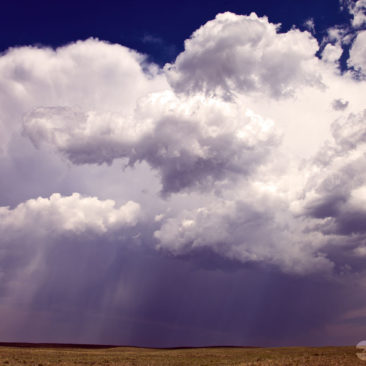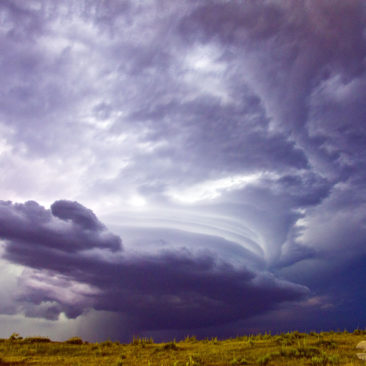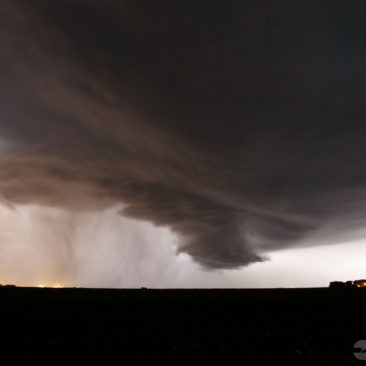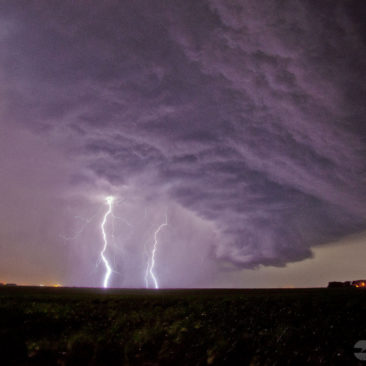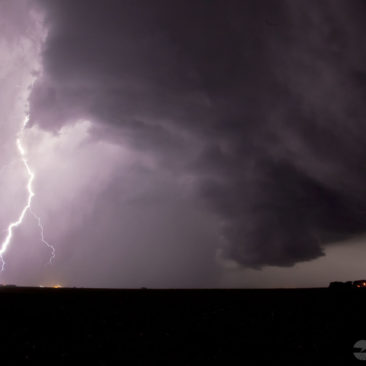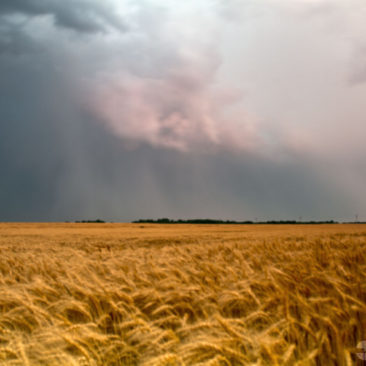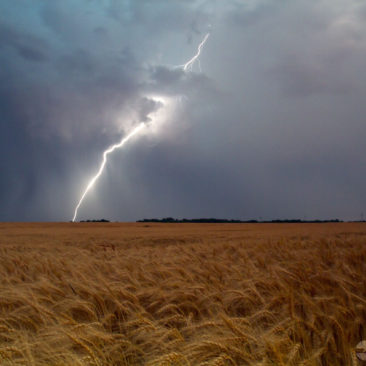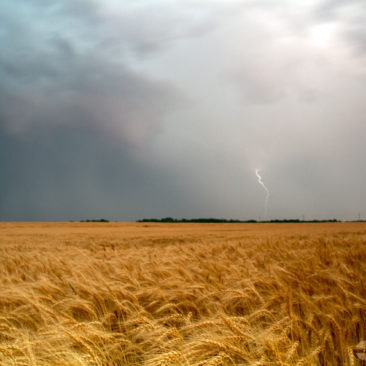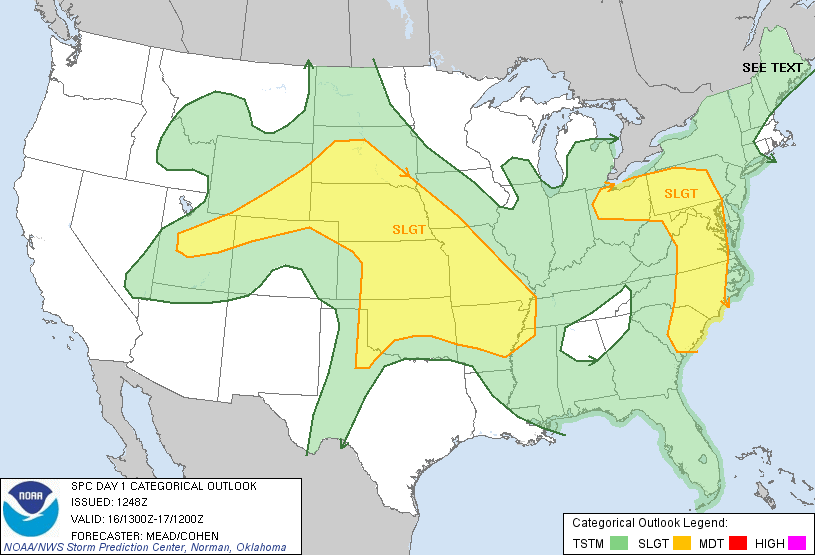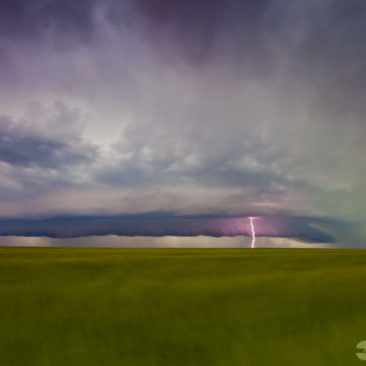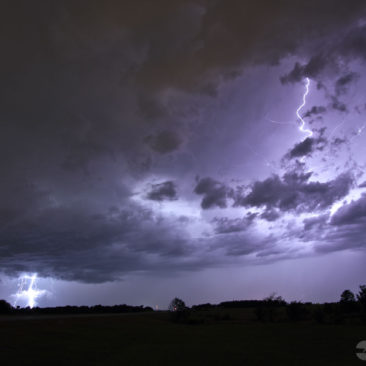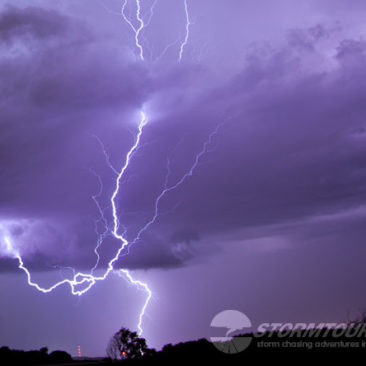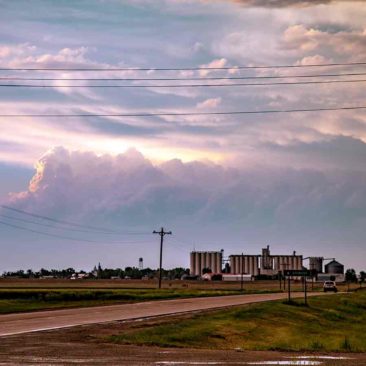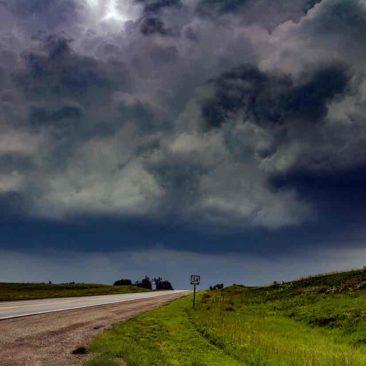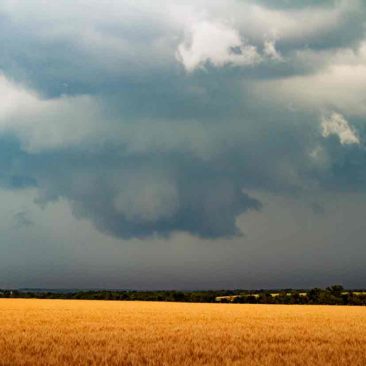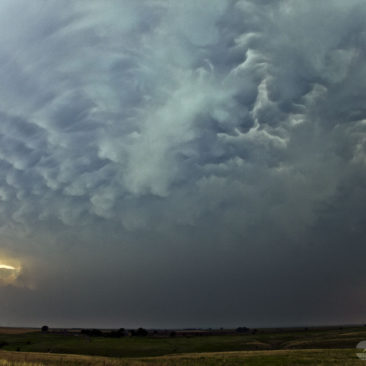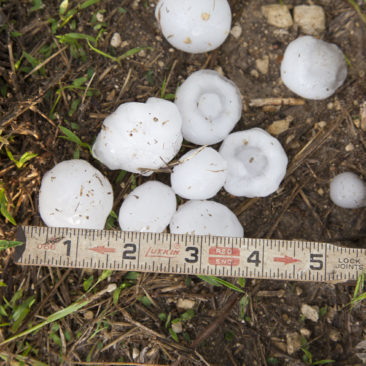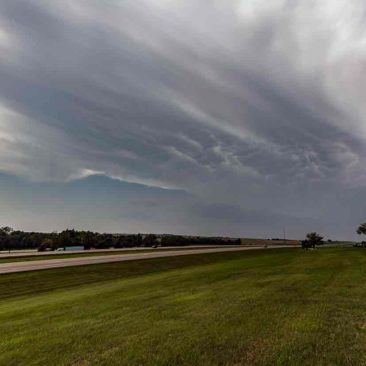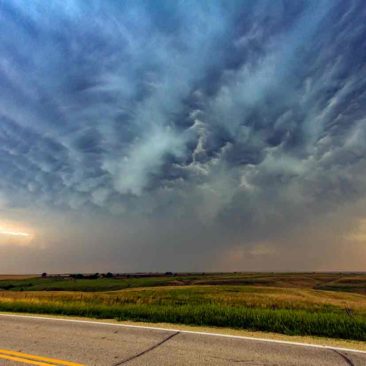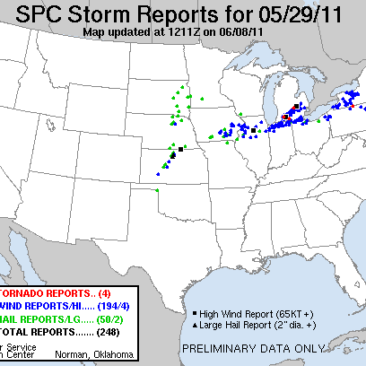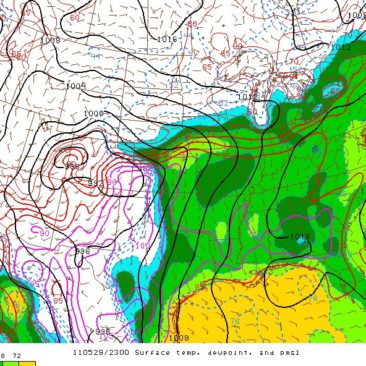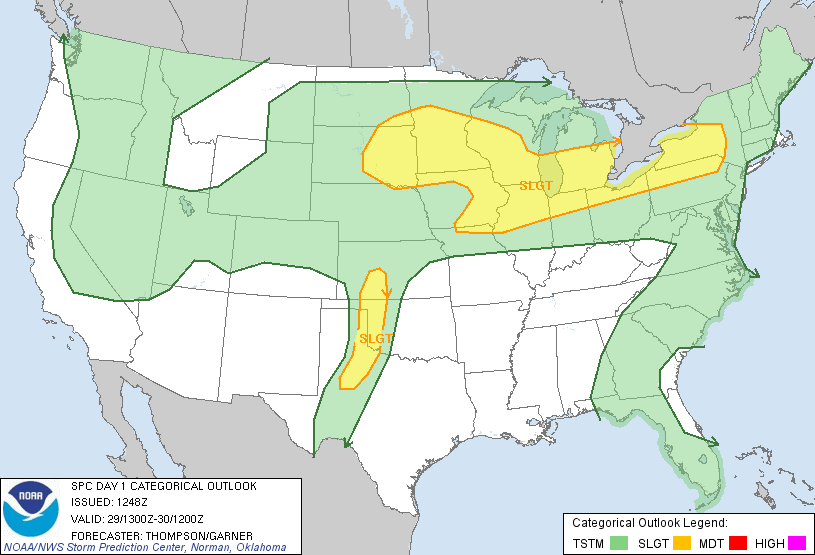
The Storm Prediction Center issued a slight risk in western Oklahoma on May 29, 2011. After looking at numerical model data, we picked a target area well outside of the slight risk area. The day brought us to Cawker City, Kansas.
Anytime we pick a target area outside of an SPC risk area, our customers get concerned. Today was no different. As it turned out, SPC received no reports of severe weather in the slight risk area along the dryline and we ended up with rotating thunderstorms that produced golfball-sized hail.
At one point, we had a nice supercell with a distinctive lowering. As a result, it tried hard to produce a tornado but never did.
To sum up the mesoanalysis, there was a surface low over southeastern Colorado. A southern low-level jet of about 10 knots was over much of central and eastern Kansas. A dryline was in-place near just west of the I-35 corridor and a surface warm front was pushing north from near Interstate-70.
Backed Surface winds were turning sharply east near Salina. As a result, there were two possibilities, either the dryline or the convergence zone northeast of the low. We picked the convergence zone. With limited heating along the dryline, it didn’t seem like a good option.
All of the day’s reported tornadoes were well outside of Tornado Alley. Three in Michigan and another in Pennsylvania. The only storm in Oklahoma was right on the Texas State Line in the corner of the Oklahoma Panhandle. North-central Kansas, however, had the largest hail in the area, so by that measure, we made the right decision.
That all said, good results come to those who do their own forecasting and who don’t pay too much attention to bullseye maps.
